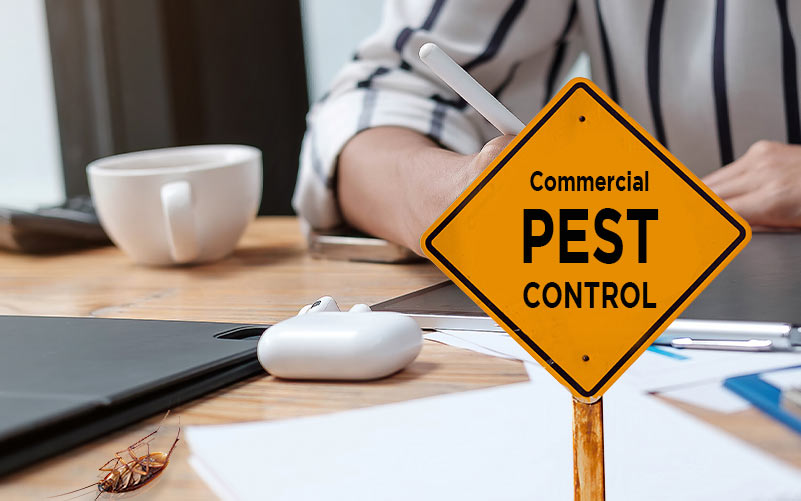A1 Charlotte Pest Control Companies - Your Neighborhood Pest Professionals
A1 Charlotte Pest Control Companies - Your Neighborhood Pest Professionals
Blog Article
Bed Pest Treatment Breakdown: Contrasting Chemical Vs. Non-Chemical Solutions
In the realm of bug control, particularly when managing the persistent problem of bed pests, the option between chemical and non-chemical treatment services can be a critical one. Both methods use distinctive advantages and downsides, affecting variables such as performance, safety considerations, and overall expense. By examining the nuanced details of each approach, a clearer understanding of which path to pursue in attending to a bed pest infestation can be acquired.
Effectiveness of Chemical Treatments
Chemical therapies for bed pest invasions have been commonly recognized for their fast and powerful efficacy in eradicating these bugs. When considering the effectiveness of chemical therapies, it is critical to understand that they can offer a quick and comprehensive remedy to a bed pest problem.
Additionally, chemical therapies have the advantage of providing residual results, indicating that they can remain to get rid of bed bugs even after the preliminary application. This residual action is particularly advantageous in combating any kind of prospective re-infestations. Additionally, the quick activity of chemical therapies can bring relief to individuals encountering severe bed bug infestations, allowing them to regain control of their home swiftly.
Security Problems With Chemical Solutions
One critical element that calls for mindful factor to consider when utilizing chemical options for bed insect therapy is ensuring the safety of owners and the environment. Direct exposure to specific chemicals used in bed pest treatments can lead to respiratory issues, skin irritation, or other adverse responses, specifically in individuals with pre-existing problems or level of sensitivities.
Furthermore, the ecological influence of chemical remedies is an additional significant factor to consider. Some chemicals utilized in bed insect therapies might be hazardous to helpful pests, wildlife, and ecological communities if they seep into the dirt or water systems. It is necessary to use chemical therapies judiciously, following security standards, and taking into consideration much less poisonous choices to mitigate these risks and make sure the effective and secure administration of bed bug invasions.
Advantages of Non-Chemical Techniques
Taking into consideration the potential security worries and ecological effect associated with chemical remedies for bed insect treatment, discovering non-chemical techniques presents a promising option with a number of unique advantages. Non-chemical treatments are eco friendly, as they do not add to air or water air pollution, making them a sustainable option for pest control.
Additionally, non-chemical remedies can be reliable in targeting bed pests, consisting of hard-to-reach areas where chemical therapies might not pass through. Approaches such as warmth therapy, vacuuming, vapor cleansing, and bed mattress encasements offer comprehensive removal without the usage of hazardous chemicals. Additionally, non-chemical approaches can be less turbulent, calling for minimal preparation and enabling for quicker reentry into treated locations. Overall, selecting non-chemical bed pest therapy methods not only focuses on safety and environmental management yet likewise makes sure extensive and effective pest control.
Limitations of Non-Chemical Treatments

In addition, non-chemical therapies often call for multiple applications to attain successful elimination. This can be taxing and might not always guarantee total elimination of all bed insects and their eggs, specifically in covert or hard-to-reach areas.
Furthermore, the success of non-chemical therapies heavily counts on correct execution and thoroughness, which can be testing for individuals without expert knowledge. Inadequate application of non-chemical approaches might result in insufficient elimination, leading to relentless infestations and the need for extra treatments.
For that reason, while non-chemical treatments have their benefits, it is necessary to acknowledge these restrictions and consider them when identifying one of the most effective strategy for managing bed pest invasions.
Cost Comparison: Chemical Vs. Non-Chemical Options
Given the constraints associated with non-chemical therapies, a vital facet to review in the context of bed insect monitoring is the price comparison in between chemical and non-chemical alternatives. In contrast, non-chemical treatments like warmth therapy or vapor can be a lot more expensive, with expenses ranging from $1,000 to $6,000 for Our site an entire home. While the initial cost of chemical therapies may seem lower, numerous treatments might be required to totally get rid of the problem, possibly raising the overall price.
Conclusion

Thinking about the prospective safety and security issues and ecological effect linked with chemical solutions for bed pest treatment, checking out non-chemical approaches provides an encouraging option with a number of distinctive benefits.Offered the constraints linked with non-chemical treatments, a crucial facet to review in the context of bed bug monitoring is the price comparison between chemical and non-chemical choices. In contrast, non-chemical therapies like warm treatment or heavy steam can be much more expensive, with expenses ranging from $1,000 to $6,000 for an entire home. While the first cost of chemical therapies might appear reduced, multiple therapies may be called for to totally eradicate the problem, possibly raising the general price.In verdict, when contrasting chemical and non-chemical bed insect therapy choices, Find Out More it is essential to consider efficiency, safety and security, benefits, limitations, and cost.
Report this page